How do the work? Airplane Wi-Fi Systems
Air-to-ground (ATG) connectivity is ostensibly faster, since the towers on the ground are closer.

This is what Gogo primarily uses. Gogo is the company that linked to those AirCell phones you used to see in the backs of headrests. Now, it powers wifi on a majority of the major US airlines.
Some of the technology behind the miracle of airplane wifi largely resembles the gear that delivers wireless internet on the ground. Airplanes use many of the same towers and satellites that deliver data to our smartphones, connecting to towers on the ground, or to satellites, or to both.
If you’re buying wifi on an airplane these days, there’s a good chance you’re buying it from Gogo, though it isn’t the only provider. Some airlines, like Lufthansa and Southwest, manage proprietary wifi systems using other technology.
Gogo is also increasingly using a newer technology called ATG-4 that takes advantage of multiple antennas—four of them, arranged strategically along the fuselage—to grab signals and offer faster speeds.
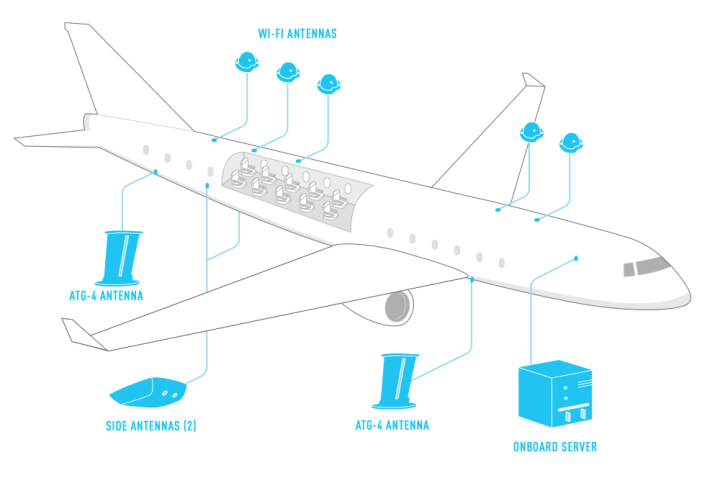
The Gear That Makes It Possible:
They may be using the same equipment that people on the ground use, but airplanes need to hold onto network signals as they zip through the air at around 550 miles per hour.
Because an airplane is moving through the stratosphere at such high speeds, the antenna must constantly maintain a connection to any given tower or satellite. It doesn’t help that the satellites themselves are orbiting the Earth at 18,000 miles per hour.
At a certain point, the antenna will have to find a new tower or satellite. Some antennas do this with motors that pan and tilt to catch a signal.

Of course, strapping an antenna onto the top of a plane isn’t great for aerodynamics. The basic workaround for now is to stash it in a little bubble on top of the fuselage called a radome. While designed to be sleek, the radome inevitably creates drag and burns extra fuel. That means that airplanes carrying Wi-Fi equipment are slightly more expensive to operate—and that’s after the airline pays to install the equipment on the plane.
Here’s what that set up looks like on a Boeing 787 operated by United Airlines, which uses Panasonic antennas on some of its planes:

Many companies are trying to come up with better solutions to the aerodynamics problem. One obvious solution is to build a better antenna with fewer moving parts that can sit right on top of the fuselage without a bulky bulge.
Ideally, the antennas won’t move at all. Instead, these next-gen systems take advantage of beamforming, or spatial filtering technology, that uses multiple antennas to create a more focused and precise signal. Some of the best Wi-Fi routers for your home offer beamforming signal processing technology, too.
To cut down on drag even more—and hence save fuel—the challenge now is to make these antennas as thin as possible. For its newest and fastest service, Gogo is using an innovative 2Ku antenna, the Thinkom ThinAir Falcon Ku3030. At less than four inches thick, these antennas barely make a hump on top of the airplane.
In the near future, these antennas will be almost invisible from the outside of the plane. A company called Kymeta is developing an impossibly thin antenna for in-flight Wi-Fi that’s completely free of any moving parts.
That means no motors and almost no drag. The finished product will be less than half an inch thick and so efficient, it can be powered with a regular USB cable. It kind of looks like a slim, pizza-sized hot plate:
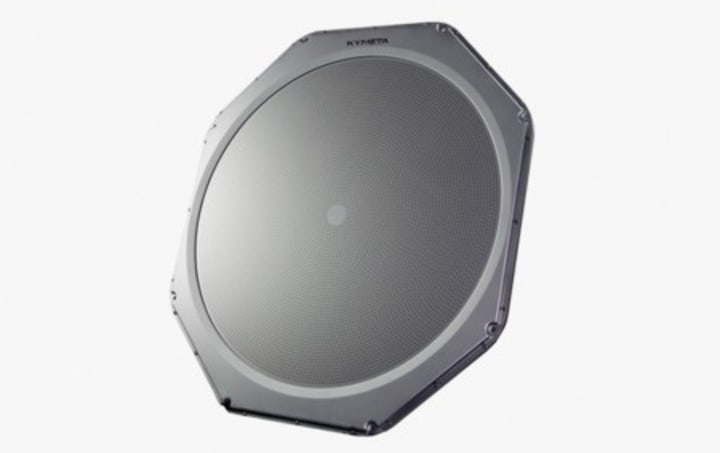
This isn’t supposed to be on the market for a few years.
The Antennae That Will Make In Flight Wi-Fi Faster
Fast isn’t really the right word to describe the majority of airplane Wi-Fi systems.
Gogo’s current ATG standard, for instance, tops out at 3.1 Mbps. The connection on a 4G LTE-equipped smartphone, by comparison, is about ten times faster on the ground.
The new ATG-4 technology peaks at 9.8 Mbps. Better! But still slower than the average terrestrial broadband speed of 11.1 Mbps—which is still slow compared to the rest of the world’s internet speeds.
However, ground-to-orbit connectivity is the way of the future. Although the signal must travel thousands of miles more to connect to satellites, the satellite connections allow for much greater bandwidth.
Using dual Ku-band antennas that connect to satellites, a new Gogo service promises to bring in-flight speeds of up to 70 Mbps. Ku refers to a specific band of microwave frequencies used in satellite communications, including those on the International Space Station.
The “K” in Ku-band stands for Kurz, the German word for short, and the “u” stands for “under” meaning under the original K-band satellite frequency.
There is also a Ka-band spectrum. The “a” here stands for “above” and allows for higher bandwidth. JetBlue recently started offering more advanced Ka-band broadband on its flights through a partnership with Viasat, a company that makes broadband “super-satellites” that promise blazingly fast speeds.
It’s all relative, of course. Initial tests of JetBlue’s so-called “Fly-Fi” system clocked speeds as fast as 30 Mbps, though the average hovered around 15 Mbps. That’s still fast enough to stream music, place phone calls, and watch YouTube videos.
The next generation of in-flight Wi-Fi will be even faster. This year, Gogo is rolling out a brand new system called 2Ku.
This setup uses dual Ku-band antennas—one to receive a signal from satellites and the other to transmit the signal from the aircraft to the ground.
Gogo promises speeds up to 70 Mbps with the 2Ku system, but it’ll probably be a few months before you get to try it.
If you want to know more about the nitty-gritty details of the various different systems, Jalopnik’s Flight Club has a great explainer.
But which airline has the best tech right now? It depends. While JetBlue’s Ka-band FlyFi is currently leading the pack, the technology isn’t currently installed on the entire fleet.
Meanwhile, Gogo’s new 2Ku service stands to eclipse the speedy speeds of Fly-Fi with multiple antennas and availability on multiple airlines.
Which Airlines Have the Best In-Flight Wi-Fi?
Here’s a hard truth: All in-flight Wi-Fi sort of sucks. First of all, you can’t know exactly what kind of Wi-Fi your plane will offer until you know your flight number. Then, even if you fly on an airline that promises Wi-Fi on all flights, each plane has different equipment installed. And even then, there’s a chance that equipment could be broken.
You can check your flight’s Wi-Fi status on the airline’s website before you book or head to the airport. Then, you just have to hope for the best.
That in mind, here are details from the 9 major US airlines that offer Wi-Fi. (This list is specific to domestic flights; if you’re flying internationally, the check-the-website rule applies even more fiercely because international fleets carry different gear than domestic fleets. If an airline has good in-flight wifi on domestic routes, though, they’re probably good for international routes as well.)
we took three things into account when making this list: the likelihood that your plane would actually have Wi-Fi; the type of equipment powering the Wi-Fi; and its relative dependability, speed, and value. Here’s how the airlines stack up.
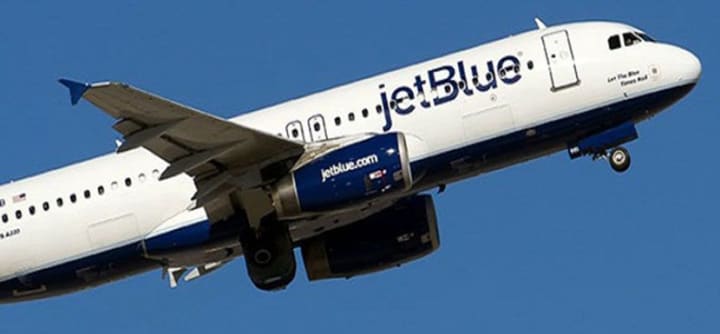
JetBlue’s Wi-Fi is probably the fastest in the sky. Its “Fly-Fi” uses the latest Ka-band technology from ViaSat and clocks in at around 15Mbps. However, there’s no guarantee it will be available on your plane.
All of the JetBlue’s Airbus 321 aircraft and 80% of its A320 aircraft have it. The rest of the fleet should be equipped this year. Before you book, check to see if your flight has Fly-Fi on JetBlue’s dedicated website.
Virgin America wins out as the second best airline for wifi simply because the crazy-fast Gogo ATG-4 service is available on the airline’s entire fleet. (Virgin flies Airbus 319s and A320s.) The service will get even faster this year, as Virgin is a launch partner for Gogo’s new 2Ku service, though it’ll roll out on transatlantic flights first. Virgin America is currently the only airline with wifi on every plane—just hope it’s not broken when you fly.
Gogo’s pricing is standardized at $5 per hour, $16 per day, and $60 for a full month pass (or $50 if you want that pass for just one airline). This pricing structure is the same for any airline that uses Gogo.
Delta is neck-and-neck with Virgin in terms of availability, since its entire fleet is Wi-Fi-equipped. There’s a spectrum of quality and speed, though.
It’s all Gogo ATG and currently being upgraded to ATG-4. So for the widebodied Boeing aircraft and the Airbus A319s have the faster 2Ku-powered systems, and it will be rolled out to the rest of the fleet this year. Check your flight’s Wi-Fi status on Delta’s MyTrips website.
Surprise! The fun-loving airline that once felt like riding a public bus through the sky has a pretty damn great Wi-Fi setup. Southwest’s proprietary system is notable because it works from gate-to-gate (for the most part). Southwest only flies Boeing 737 aircraft, and about a third of the fleet is equipped with Ku-band Wi-Fi provided by a company called Row44.
For $8 a day, the Wi-Fi service is pretty fast, and since it’s satellite-based, the internet won’t cut out when you fly over bodies of water. You also get a bunch of free TV content when you connect. However, you could easily end up on a plane that’s not equipped with Wi-Fi, and not all of the Wi-Fi-equipped have power sources. Check your flight with Southwest’s Wi-Fi Finder.
American Airlines (as well as its new partner US Airways) has pretty good Wi-Fi coverage across its fleet. It offers Gogo service on the vast majority of its aircraft but not on any of its regional jets. To see if your flight has Wi-Fi, American tells you to search the itinerary and look for a little Wi-Fi signal, which is kind of annoying but whatever. Good effort.
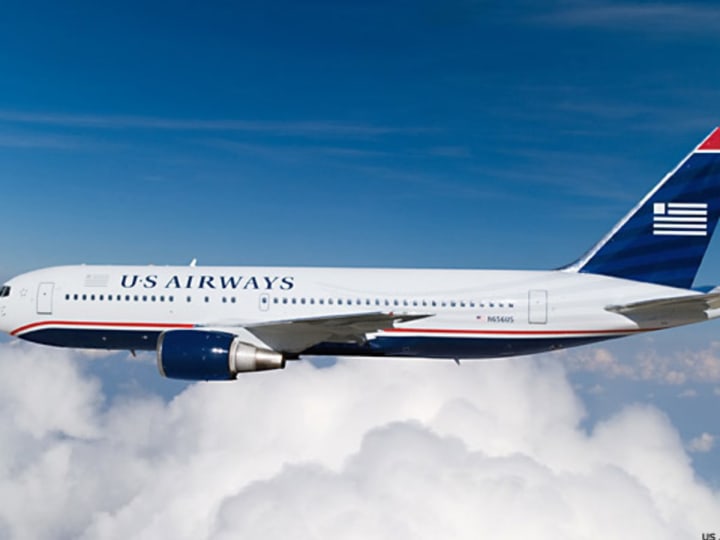
Ditto on the Gogo offering, as US Airways and American Airlines are now merging. It should be noted that Gogo passes purchased for US Airways will not work on American Airlines yet, but they’re working on it.
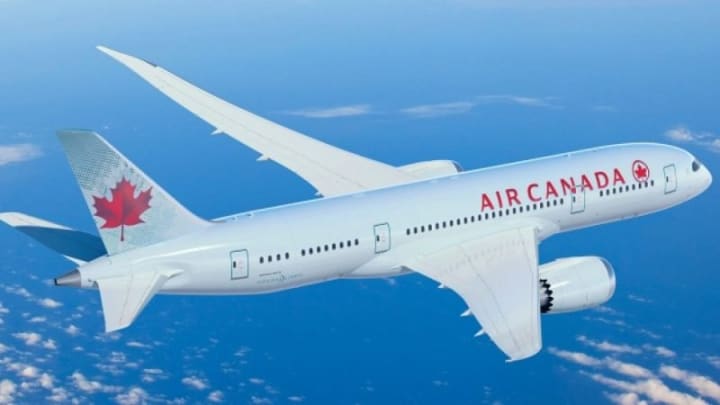
Long story short, whether your Air Canada flight has Wi-Fi is a tossup. If it does, it’ll be provided by Gogo, and then, it’s a tossup whether you get the sort of newer, less slow system of the old crap.
In-Short:
There are two primary methods to enable a passenger Internet connection on an airplane: satellite and air-to-ground. I’ll talk about some of the key points on each of those, then talk about the in-cabin WiFi access point part.
Air-to-ground:
- As the name implies, signals go from the airplane directly to antennas on the ground
- Uses a network of ground cell towers across the continental U.S. (therefore does not work over water). These towers’ cells are much larger than those of the typical cell towers used for phones.
- Uses a version of CDMA, just like Verizon cell phones
- Antennas are on the belly of the airplane, looks like a small fin
- As the airplane flies, the connection hands off from one tower to the next just like your phone does when you’re driving. Users don’t notice any interruption.
- Network infrastructure is much cheaper than satellite
- Bandwidth for the newest generation system (ATG4) is up to 9.8 megabits per second (Mbps) per airplane (shared across all users). This is enough for email and casual web surfing, but would get quickly exhausted if people stream video – so this is usually blocked.
- Gogo is the top provider of this type of service
- Installed on over 1,000 aircraft operating on domestic routes in the U.S., including Delta, American, Virgin America, and Alaska
- Plans announced in late 2014 by Inmarsat to partner with Gogo on a hybrid ATG+satellite solution for Europe Satellite
- Unlike air-to-ground, signals from the airplane go into space to an orbiting satellite and then down to the ground. These satellites are usually in geostationary orbit, 22,300 miles up.
- Three types offer different levels of performance (bands indicate specific transmission frequency ranges):
- L-band (e.g. Inmarsat Swift Broadband): pretty slow, max 422kbps per channel per airplane
- Ku-band (e.g. Panasonic, Global Eagle, and Gogo): tops out at around 20-40Mbps per airplane. Speeds depend on how many airplanes are in the satellite’s transponder “footprint” (aka spot beam)
- Ka-band (near future, satellites launching soon): promises even higher speeds
- A modern satellite has dozens of transponders to support a large number of simultaneous connections, e.g. ships, airplanes, portable ground terminals
- Leasing transponders (antennas) on satellites is very expensive, so this cost is usually passed on to the airline and the passengers. But Jetblue offers it for free.
- The airplane’s antenna is on the top of the fuselage, under a bubble-shaped radome
- Only choice for trans-oceanic routes, and routes flying closer to the polar region (since you can’t put cell towers in the ocean)
- Using satellites means a few hundred milliseconds more latency since the data packets need to go 22,300 miles up to the satellite, then roughly 22,300 miles back down to the airplane.
- New constellations of low earth orbit (LEO) satellites providing lower latency high bandwidth connections are in development since 2015, e.g. by SpaceX.
- Installed base not large yet but growing, targeted initially for routes between the U.S. and Europe
- As the airplane flies, the antenna on the top of the plane is steered or electronically aimed to stay pointed at the correct transponder on the satellite up in orbit. For long-haul flights, there will likely be a handoff from one satellite to another when moving between coverage areas.
- This happens via coordination on the ground, and the airborne users may only notice a very brief hiccup.
- From the satellite’s viewpoint, it switches airplanes from one transponder to the next as it moves between the beams pointed at the ground.
If you want more technical detail, here is a very nice presentation put together by Panasonic on use of Ku-band for airplanes: https://bit.ly/PanasonicCorp
Edit: In the airplane cabin, there are multiple WiFi access points (WAPs) for passengers to connect to. A large twin-aisle plane may have as many as 6 of these, while a B737 or A320 usually has just 2.
From the WAP, the passenger’s connection is routed through an onboard server to the satellite or air-to-ground communications system and then goes off board. For both technologies, the goal is to make the passenger’s connection as seamless as possible as the aircraft moves through the sky.
Note: In case you’re wondering… no, it is not possible to take over control of an airplane remotely over a passenger Internet link. Or any other link, for that matter.
Useful Links:
[1] Gogo’s tech and coverage map: Gogo ATG4 | Gogo Commercial Aviation
[2] Delta: http://www.delta.com/content/www… ,
[3]American: Wi-Fi and connectivity
[4]Alaska: Alaska Beyond Inflight Entertainment | Alaska Airlines






Comments
There are no comments for this story
Be the first to respond and start the conversation.